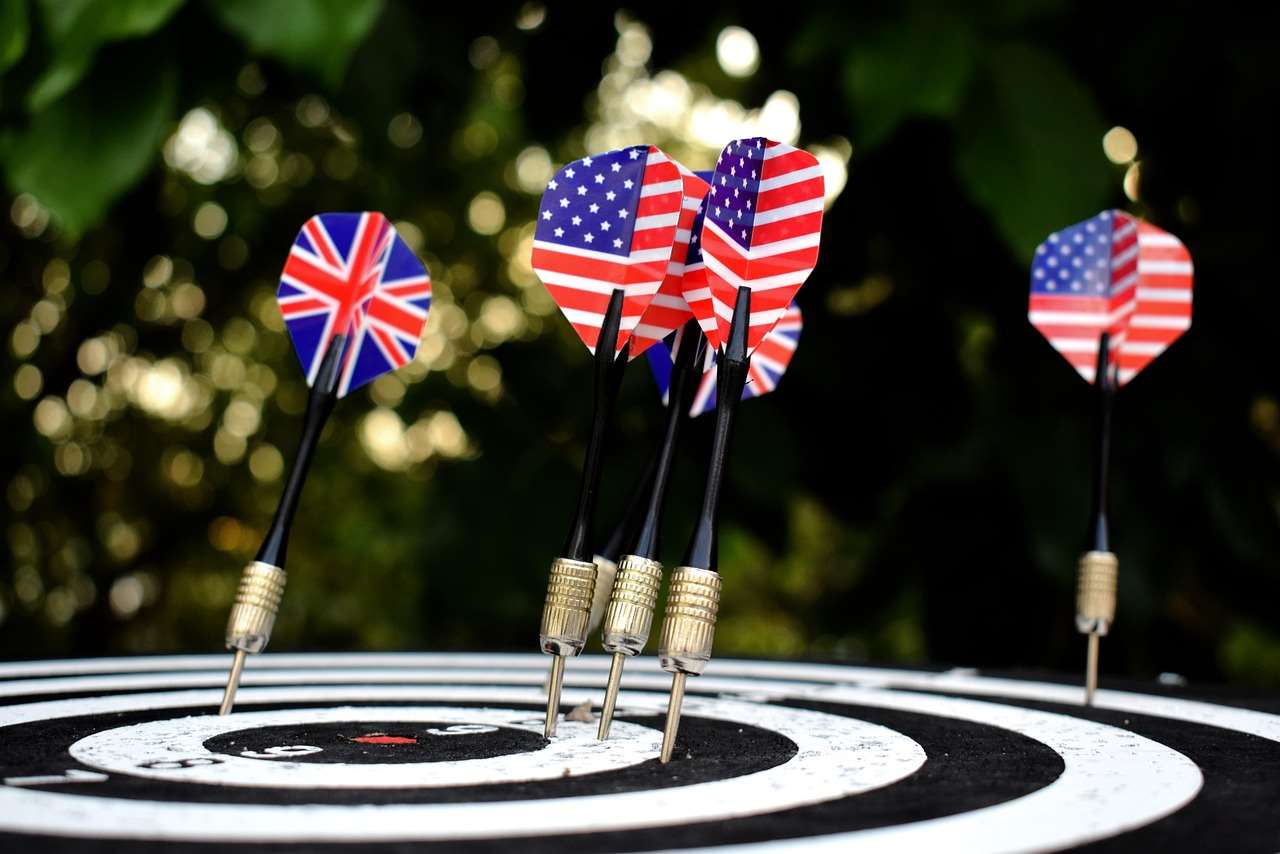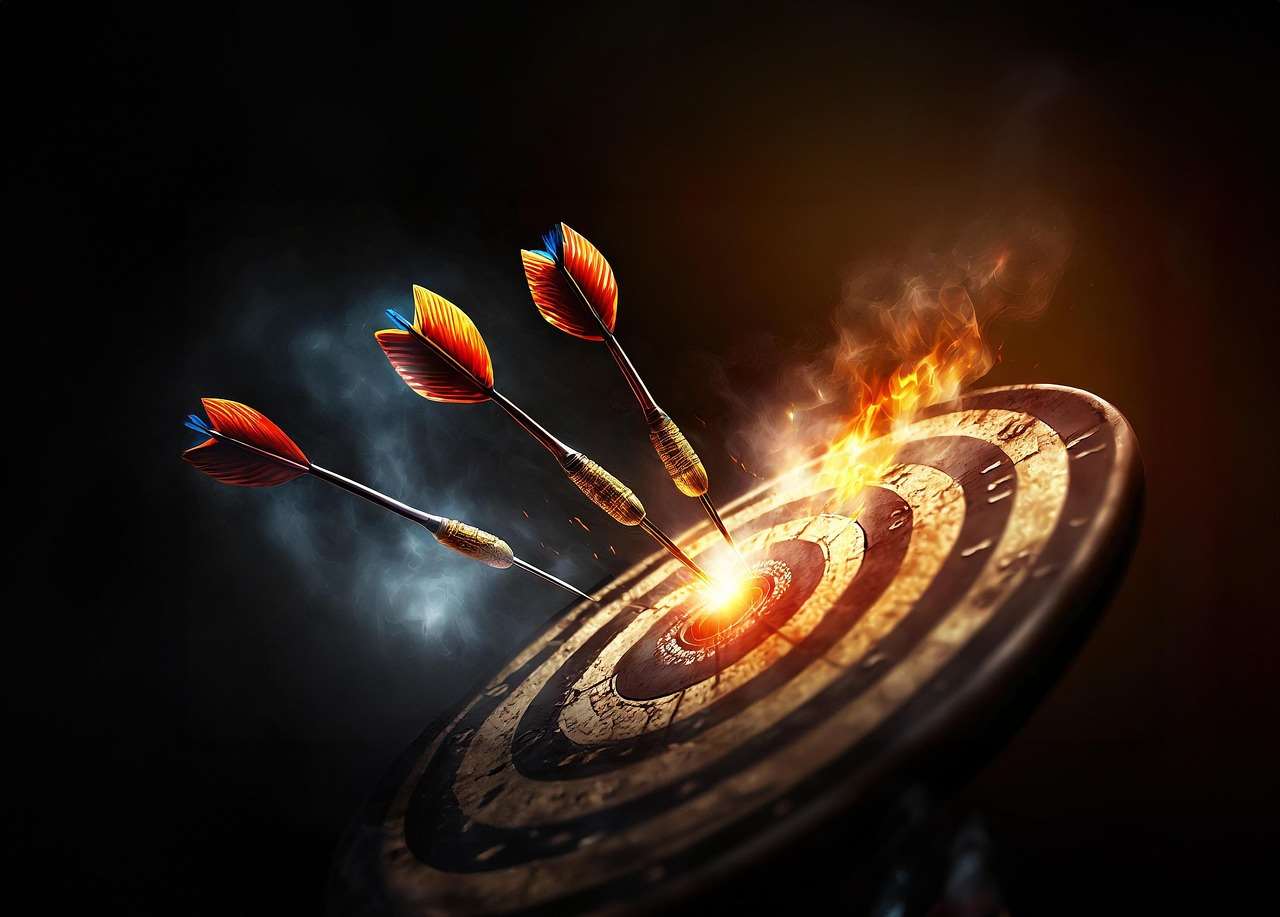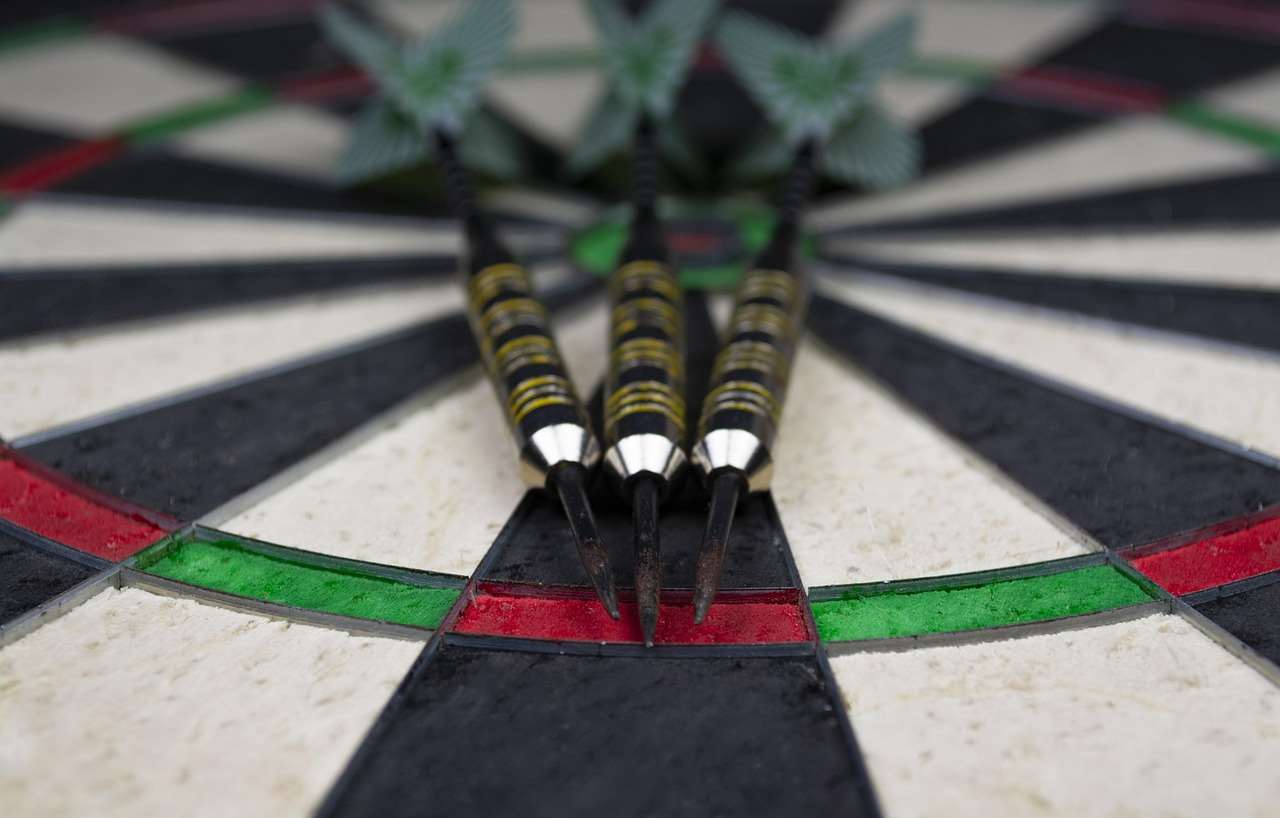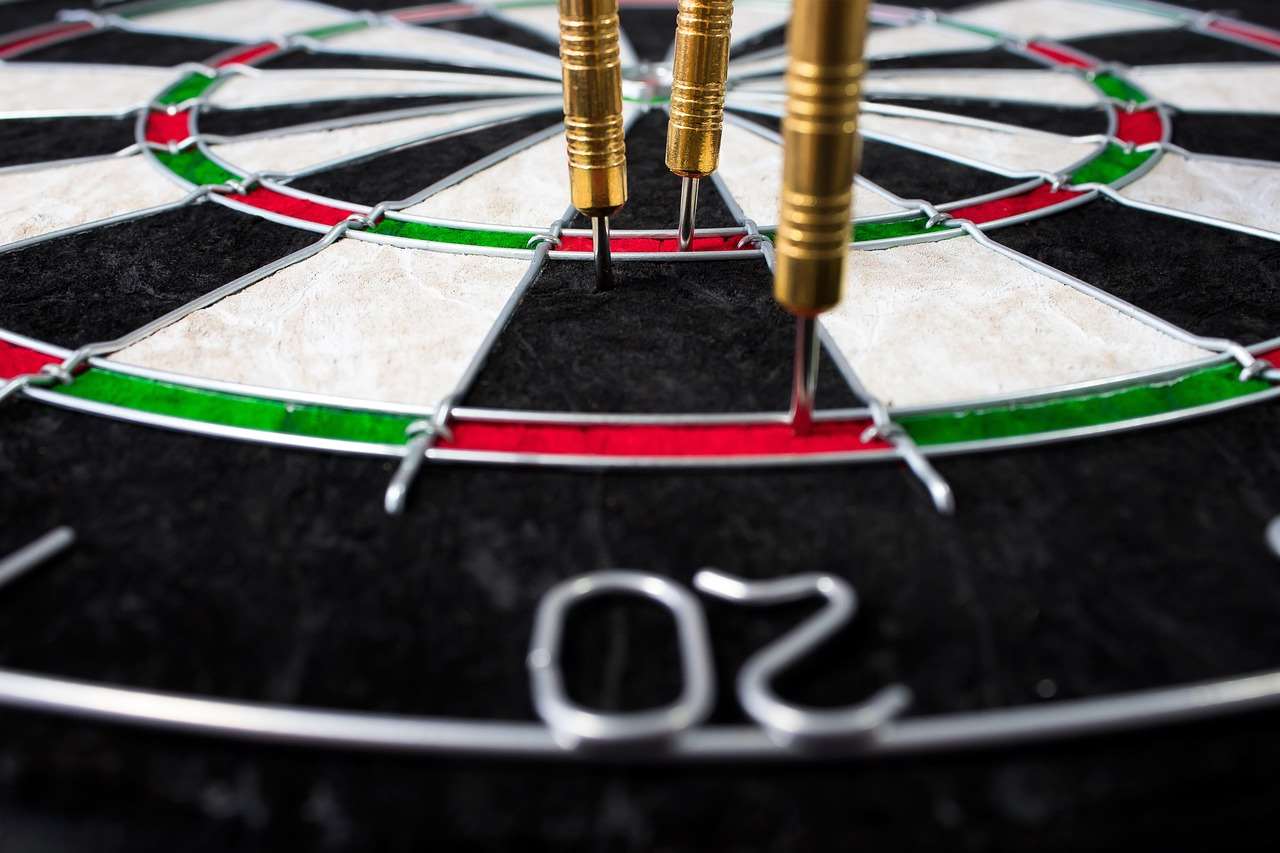Ultimately, which darts are best for me depends on your individual grip, throwing style, and personal preferences, but generally, starting with a balanced, medium-weight dart (around 22-24 grams) is a solid choice. In this article, we’ll explore the key factors to consider when choosing darts, including weight, barrel material, grip, flights, and shafts, so you can make an informed decision and improve your game.
⚠️ Still Using Pen & Paper (or a Chalkboard)?! ⚠️
Step into the future! The Dart Counter App handles all the scoring, suggests checkouts, and tracks your stats automatically. It's easier than you think!
Try the Smart Dart Counter App FREE!Ready for an upgrade? Click above!
Understanding Dart Weight: Finding Your Sweet Spot
Dart weight plays a crucial role in your throwing consistency and accuracy. Lighter darts (under 22 grams) are often favored by players who prefer a faster, more flick-like throwing motion, while heavier darts (over 24 grams) tend to suit players who use a smoother, more deliberate throw. However, there’s no universally “best” weight. It truly boils down to what feels most comfortable and controllable for you.
Experimenting with different weights is highly recommended. Borrow darts from friends, visit a local darts shop, or purchase a sample pack to try out a range of weights. Pay attention to how each weight feels in your hand, how easily you can release it, and how consistently you can hit your target.
Factors like your arm strength and the distance you stand from the dartboard can also influence your ideal dart weight. Someone with a stronger arm might find heavier darts easier to control, while someone with a shorter reach might prefer lighter darts. Don’t be afraid to adjust your stance or throwing technique slightly as you experiment with different weights.

Tips for Determining Your Ideal Dart Weight:
- Start with a Medium Weight: As mentioned earlier, a dart weighing between 22 and 24 grams is a good starting point for most players.
- Experiment with Small Increments: When trying different weights, increase or decrease in small increments (e.g., 1-2 grams) to notice subtle differences.
- Consider Your Throwing Style: If you have a fast, flick-like throw, try lighter darts. If you have a smooth, deliberate throw, try heavier darts.
- Focus on Consistency: The best dart weight is the one that allows you to throw consistently and accurately.
The Importance of Barrel Material and Grip
The barrel is the main body of the dart and is responsible for providing a comfortable grip. Common barrel materials include brass, nickel silver, and tungsten. Each material offers different levels of density and grip texture.
- Brass: Brass darts are the most affordable option, making them a great choice for beginners. However, they are also the bulkiest and least durable.
- Nickel Silver: Nickel silver darts are more durable than brass and offer a slightly slimmer profile. They are a good mid-range option.
- Tungsten: Tungsten darts are the most expensive but also the most durable and densest. This allows for a much slimmer barrel, which can be beneficial for grouping darts tightly on the dartboard.
The grip of the barrel is equally important. Different barrels feature various grip styles, including knurled, ringed, and smooth. The best grip for you will depend on your personal preference and the amount of grip you need to maintain control of the dart.
Some players prefer a very aggressive grip, while others prefer a smoother, more subtle grip. Experiment with different grip styles to find what works best for you. You can also try using different grip waxes or sprays to enhance your grip.
When considering barrel material, also think about its impact on your dart’s overall balance. Tungsten, being denser, allows for a smaller barrel for the same weight, potentially shifting the center of gravity and affecting the dart’s flight. You can find ja darts online.

Flights and Shafts: Completing Your Dart Setup
Flights and shafts are the final components of your dart setup. Flights provide stability and lift to the dart during flight, while shafts connect the flight to the barrel.
Flights come in a variety of shapes, sizes, and materials. Common flight shapes include standard, slim, kite, and pear. Standard flights are the most common and offer a good balance of stability and lift. Slim flights are more aerodynamic and are often preferred by players with a faster throw. Kite and pear-shaped flights offer increased lift and stability.
Shafts are typically made of aluminum, nylon, or carbon fiber. Aluminum shafts are the most durable but can be prone to bending. Nylon shafts are more flexible and less likely to bend, but they can break more easily. Carbon fiber shafts are the lightest and most durable option, but they are also the most expensive. You might also want to consider the dartboard backing ideas that are available.
The length of the shaft can also affect the dart’s flight. Shorter shafts tend to make the dart fly straighter, while longer shafts can increase the dart’s spin and lift. Experiment with different flight shapes and shaft lengths to find the combination that works best for your throwing style.
Flight and Shaft Combination Tips:
- Start with Standard Flights and Medium-Length Shafts: This is a good starting point for most players.
- Adjust Flight Shape Based on Throwing Style: If you have a fast, flick-like throw, try slim flights. If you need more lift and stability, try kite or pear-shaped flights.
- Consider Shaft Material Based on Durability Needs: If you are prone to breaking shafts, try aluminum or carbon fiber shafts.
How to Test and Evaluate Darts: A Practical Approach
The best way to determine which darts are best for me is to test them thoroughly. Try out different weights, barrel materials, grip styles, flight shapes, and shaft lengths. Pay attention to how each dart feels in your hand, how easily you can release it, and how consistently you can hit your target.
Keep a log of your results. Note which darts you like and dislike, and why. This will help you identify patterns and narrow down your options. Don’t be afraid to experiment and make adjustments along the way. The goal is to find a dart setup that feels comfortable and allows you to throw consistently and accurately.
Consider factors beyond the dart itself. Is your home darts oche properly positioned? Are you using an Automatic dart scoring app to track your progress?

Understanding Your Throwing Style and Grip
A crucial element in determining which darts are best for me involves a deep understanding of your unique throwing style and grip. These factors directly influence the type of dart that will feel most comfortable and allow for consistent accuracy.
Grip Styles: Different players employ various grip styles. Some prefer a firm, tight grip, while others favor a looser, more relaxed hold. The choice of barrel grip is directly related to this. If you have a tight grip, a smoother barrel might suffice, whereas a looser grip might necessitate a more textured or knurled barrel.
Throwing Motion: Your throwing motion impacts the dart’s flight and trajectory. A smooth, pendulum-like motion might be better suited to a balanced dart, while a more forceful, wrist-driven throw might benefit from a dart with a specific weight distribution. Understanding whether you rely more on your arm or wrist is key. You can even learn more about the darts game count to keep track of your progress.
Experiment with consciously adjusting your grip and throw. Note how these changes affect your accuracy and consistency. This self-awareness will guide you towards the perfect dart.
Budget Considerations for Darts
While the technical aspects of darts are important, budget also plays a significant role in which darts are best for me. Darts range in price from very affordable sets to high-end professional models. Setting a budget beforehand will help you narrow down your options and prevent overspending.
Beginner Darts: If you’re just starting out, there’s no need to invest in the most expensive darts. A basic set of brass or nickel silver darts will suffice. These are readily available and can provide a good introduction to the game.
Intermediate Darts: As you improve, you may want to upgrade to a set of tungsten darts. These offer better durability, a slimmer profile, and improved grip options. However, be prepared to pay a higher price. If you are interested in the PDC you might be curious about what darts championship tv channel to watch.
Professional Darts: Professional-level darts are typically custom-made to the player’s exact specifications. These darts can be very expensive, but they offer the ultimate in performance and customization. Unless you are a serious competitive player, these are likely unnecessary.
Remember to factor in the cost of accessories, such as flights, shafts, and a dart case, when setting your budget. Also, check the dartcounter app kosten to properly budget for your improvement.

Considering Different Dart Brands
Numerous dart brands cater to various skill levels and preferences. Exploring different brands can help you discover the nuances of each manufacturer’s design and quality. Ultimately, which darts are best for me can hinge on brand reputation, design aesthetics, or even professional endorsements.
Popular Brands: Some of the most well-known dart brands include Winmau, Unicorn, Target, and Harrows. Each brand offers a wide range of darts in different weights, materials, and styles. Researching these brands and reading reviews can provide valuable insights.
Brand Reputation: Consider the brand’s reputation for quality and durability. Brands with a long history of producing high-quality darts are generally a safe bet. Customer reviews can also provide valuable information about the brand’s customer service and warranty policies. You can also check out target darts order tracking for your new set.
Don’t be afraid to try out darts from different brands to see which ones you prefer. Many dart shops offer test darts that you can throw before making a purchase.
Maintaining Your Darts for Optimal Performance
Once you’ve found the perfect set of darts, it’s important to maintain them properly to ensure optimal performance and longevity. Regular cleaning and maintenance can prevent damage and keep your darts flying true.
Cleaning: Clean your darts regularly with a soft cloth to remove dirt and debris. You can also use a mild soap and water solution to clean the barrels. Avoid using harsh chemicals or abrasive cleaners, as these can damage the finish of the darts.
Sharpening: Sharpen your dart points regularly to ensure they stick in the dartboard properly. You can use a dart sharpener or a sharpening stone to sharpen the points. Be careful not to over-sharpen the points, as this can damage the dartboard.
Replacing Flights and Shafts: Replace your flights and shafts as needed. Flights can become damaged or worn over time, and shafts can bend or break. Replacing these components will help maintain the dart’s balance and flight characteristics.
Storage: Store your darts in a dart case to protect them from damage when not in use. A dart case will also help keep your darts organized and prevent them from getting lost. Remember to practice until you can pass the dart q school.

Conclusion: Finding the Perfect Darts for Your Game
Choosing which darts are best for me is a personal journey that requires experimentation and self-awareness. By considering factors like dart weight, barrel material, grip, flights, and shafts, and by understanding your own throwing style and budget, you can find the perfect dart setup to improve your game. Remember to try out different darts, keep a log of your results, and maintain your darts properly to ensure optimal performance.
Now that you have a better understanding of which darts are best for me, it’s time to take action! Visit your local darts shop, try out some different darts, and start experimenting. With a little effort and patience, you’ll be hitting those 180s in no time!
Hi, I’m Dieter, and I created Dartcounter (Dartcounterapp.com). My motivation wasn’t being a darts expert – quite the opposite! When I first started playing, I loved the game but found keeping accurate scores and tracking stats difficult and distracting.
I figured I couldn’t be the only one struggling with this. So, I decided to build a solution: an easy-to-use application that everyone, no matter their experience level, could use to manage scoring effortlessly.
My goal for Dartcounter was simple: let the app handle the numbers – the scoring, the averages, the stats, even checkout suggestions – so players could focus purely on their throw and enjoying the game. It began as a way to solve my own beginner’s problem, and I’m thrilled it has grown into a helpful tool for the wider darts community.